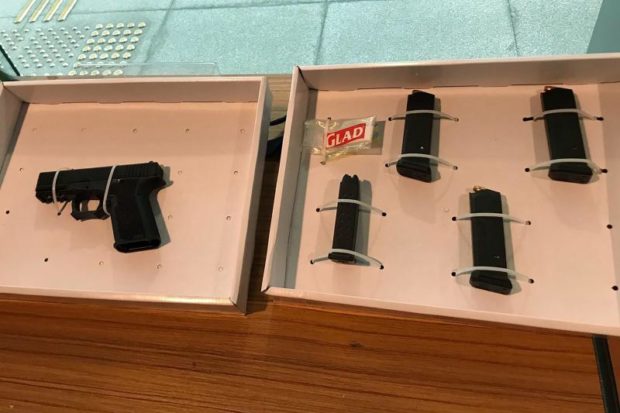Protesters keep up pressure with mass march in Hong Kong
HONG KONG — Hundreds of thousands braved the chilly weather in Hong Kong to join a massive and largely peaceful march yesterday afternoon hours after police, in a crackdown on the main island, seized a gun and bullets which they believed were intended to be used during the demonstration.
Sunday’s march to mark Human Rights Day drew a crowd of 800,000, said the Civil Human Rights Front, the organizer behind the biggest protests in the city. The event was a sign of the level of support for the anti-government movement that has stretched for more than six months.
The march, which began around 3pm, went on smoothly but tensions notched up at night when hundreds of protesters in face masks and helmets started building barricades in areas such as Central and Causeway Bay to slow down riot police stationed metres away, as participants of the march dispersed.
Petrol bombs were thrown at the entrance of the Court of Final Appeal and High Court Building after 6pm.
Police stationed a water cannon truck and armoured vehicles along Connaught Road Central in anticipation of possible violence.
Hours before that, the authorities said they confiscated a semi-automatic Glock pistol and 105 bullets in the operation at 11 locations on Hong Kong Island, with 11 individuals arrested.
Article continues after this advertisementOrganized crime and triad senior superintendent Li Kwai Wah said this was the first time that a handgun, partially loaded with bullets, had been seized in half a year of protests. Of those arrested, eight were men and three were women, aged between 20 and 63. Also seized were knives, sabres, batons, pepper spray and firecrackers.
Article continues after this advertisementSunrday’s event was the first march held by the Front to be approved in months, and people walked from Victoria Park in Causeway Bay to Chater Garden in Central.
Joining the march in the afternoon was Ms C. Chan, 39, who said she was on the streets with her husband and two children aged one and four because she had the right to do so. “The government might not listen, but I have to express my views.”

A Glock handgun and magazines loaded with ammunition, which police say were seized during raids ahead of a Dec 8 pro-democracy rally in Hong Kong. AFP via The Straits Times/Asia News Network
Asked if she was afraid of possible chaos following the weapons seizure, she said: “They say this (that the weapons belong to some protesters), but I don’t think it is very believable.”
A 20-year-old student who wanted to be known only as Water said she does not trust the police.
“First of all, do the weapons found really belong to us? They just base it on what they searched. Could it be that those are their own but they claim they (weapons) are ours? Basically, the way they enforce the law is no longer recognized by Hong Kongers,” she said.
She said the government’s inaction means that protests will continue despite the landslide victory by the pan-democracy group in the District Council Elections on Nov 24.
Dr Sing Ming of The Hong Kong University of Science and Technology said the turnout reflects the widespread and deep discontent of the public towards the Hong Kong government and Beijing.
“The lack of any willingness on the part of Beijing and the Hong Kong government to compromise soon after the pan-democrats’ electoral victory also highlights Beijing’s hardline position,” said Dr Sing, who said the event’s turnout shows the public’s resolve to fight for their freedom and to show support for the front-line protesters.
Hong Kong’s economy slid into technical recession after contracting two consecutive quarters. In the third quarter, its economy shrank by 3.2 per cent year on year, prompting the government to pledge another HK$4 billion (S$695 million) in relief measures, bringing the total amount to HK$25 billion.
The demonstration Sunday comes ahead of a planned strike Monday, where protesters intend to start disrupting the transport network as early as 6am.